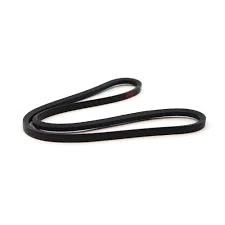- Arabic
- French
- Russian
- Spanish
- Portuguese
- Turkish
- Armenian
- English
- Albanian
- Amharic
- Azerbaijani
- Basque
- Belarusian
- Bengali
- Bosnian
- Bulgarian
- Catalan
- Cebuano
- Corsican
- Croatian
- Czech
- Danish
- Dutch
- Afrikaans
- Esperanto
- Estonian
- Finnish
- Frisian
- Galician
- Georgian
- German
- Greek
- Gujarati
- Haitian Creole
- hausa
- hawaiian
- Hebrew
- Hindi
- Miao
- Hungarian
- Icelandic
- igbo
- Indonesian
- irish
- Italian
- Japanese
- Javanese
- Kannada
- kazakh
- Khmer
- Rwandese
- Korean
- Kurdish
- Kyrgyz
- Lao
- Latin
- Latvian
- Lithuanian
- Luxembourgish
- Macedonian
- Malgashi
- Malay
- Malayalam
- Maltese
- Maori
- Marathi
- Mongolian
- Myanmar
- Nepali
- Norwegian
- Norwegian
- Occitan
- Pashto
- Persian
- Polish
- Punjabi
- Romanian
- Samoan
- Scottish Gaelic
- Serbian
- Sesotho
- Shona
- Sindhi
- Sinhala
- Slovak
- Slovenian
- Somali
- Sundanese
- Swahili
- Swedish
- Tagalog
- Tajik
- Tamil
- Tatar
- Telugu
- Thai
- Turkmen
- Ukrainian
- Urdu
- Uighur
- Uzbek
- Vietnamese
- Welsh
- Bantu
- Yiddish
- Yoruba
- Zulu
ডিসে. . 04, 2024 10:23 Back to list
Understanding Timing Belt Teeth and Their Impact on Engine Performance
Understanding Timing Belt Teeth The Key to Engine Performance
Timing belts play a crucial role in the operation of modern internal combustion engines. They are responsible for synchronizing the rotation of the crankshaft and camshaft, ensuring that the engine’s valves open and close at the proper times during the intake and exhaust strokes. A critical component of the timing belt system is its teeth, which engage with pulleys that transfer motion. In this article, we will explore the importance of timing belt teeth, their design, and the implications of wear or damage.
The Design and Function of Timing Belt Teeth
Timing belts are typically made of durable materials such as rubber reinforced with fiber, which gives them strength and flexibility. The teeth on a timing belt are designed to fit precisely into corresponding grooves on the belt pulleys. This engagement is essential for maintaining the correct timing of the engine. The teeth ensure a positive drive without slipping, which is vital since even a minor misalignment can cause severe engine performance issues.
The design of the teeth is critical; they are often trapezoidal or rounded in shape to maximize grip and minimize wear. The size, spacing, and shape of the teeth are engineered specifically to suit the engine’s requirements. An appropriate tooth profile ensures that the belt can handle the operational stress while providing a quiet and efficient transmission of power.
How Timing Belt Teeth Affect Engine Performance
The performance of an engine is closely tied to the health of its timing belt teeth. Worn or damaged teeth can lead to belt slippage, causing a delay in the opening and closing of the engine’s valves. Such timing discrepancies can result in poor engine performance, decreased fuel efficiency, and even serious mechanical failures. In some cases, the engine might suffer from valve float, where the valves do not close properly, which can lead to catastrophic damage—a scenario often referred to as “interference engine failure.”
It’s essential to understand that timing belts are not designed to last indefinitely. Manufacturers typically recommend replacing them at specific intervals—often between 60,000 to 100,000 miles. Regular inspections of the timing belt and its teeth can prevent costly repairs and ensure the engine operates efficiently.
Signs of Worn Timing Belt Teeth
As a vehicle owner, being aware of the signs of a worn or damaged timing belt is crucial. Common indicators include
1. Engine Misfires If the timing belt teeth are compromised, the synchronization between the crankshaft and camshaft may falter, leading to misfires.
timing belt teeth

3. Oil Leaks In some cases, oil leaks could indicate a problem with the timing belt cover, which may affect the belt and its teeth.
4. Check Engine Light A lit check engine light can indicate various issues, including potential problems with the timing belt.
Maintaining Your Timing Belt System
To ensure the longevity and performance of the timing belt and its teeth, regular maintenance is key. Here are some tips for maintaining your timing belt system
- Follow Manufacturer Recommendations Adhere to the manufacturer’s guidelines regarding timing belt replacement and inspection.
- Regular Inspections Have your timing belt inspected during routine maintenance. Look for signs of wear, such as cracks or frayed edges.
- Check Pulleys and Tensioners The tensioners and pulleys that the belt rides on should also be examined regularly. Worn components can lead to premature belt deterioration.
- Listen for Unusual Noises Pay attention to any unusual sounds during engine operation, as they could signify a problem with the timing belt or its associated components.
Conclusion
The teeth of a timing belt are more than just a design feature; they are integral to the engine’s performance. Understanding their function and maintaining their condition is crucial for preventing engine damage and ensuring optimal performance. Whether you are a seasoned mechanic or a car owner, staying informed about the state of your timing belt can save you time and money in the long run. By recognizing the importance of timing belt teeth and conducting regular maintenance checks, you can help ensure that your engine continues to run smoothly for years to come.
-
High-Performance Metric Variable Speed Belts for Industrial Use
NewsJul.25,2025
-
High-Quality Endless Flat Drive Belt for Precision Power Transmission
NewsJul.24,2025
-
High-Performance Serpentine Belt for Car Engines – Durable & Reliable
NewsJul.23,2025
-
High Efficiency V Belt Drive with Double & Toothed Options for Industry
NewsJul.22,2025
-
Affordable Fan Belt Cost - Compare Prices & Save | Auto Parts Deals
NewsJul.22,2025
-
China Factory 6PK1130 EPDM Rubber Engine Conveyor Belt Supplier
NewsJul.21,2025

